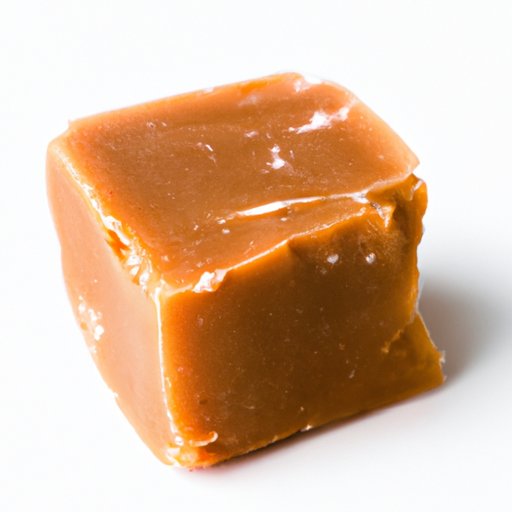Introduction
If you’re a fan of sweets, chances are, you’ve had caramel in some form. From drizzles on ice cream to the luscious filling in a chocolate bar, caramel is a versatile and delicious ingredient that has captured dessert lovers’ hearts for generations. But what exactly is caramel? In this article, we’ll explore the history and science behind it, how to make it, different types of caramel, its uses in cooking and baking, health considerations, and its cultural significance.
The history of caramel
Caramel has a long and fascinating history, dating back to ancient times. The word “caramel” comes from the Latin word “cannamellis,” meaning “sugar cane” and “honey.” Early civilizations, such as the Egyptians and Greeks, enjoyed sweet treats made from honeycomb and preserved fruits, which historians believe inspired the creation of caramel. By the Middle Ages, sugar began to replace honey as the main sweetener, and candy makers experimented with sugar and heat to create a variety of confections, including caramel. In the 18th and 19th centuries, caramel making became more sophisticated, with techniques such as boiling, stirring, and caramelizing sugar. Today, caramel is a staple ingredient in desserts, ranging from homemade treats to mass-produced chocolates.
The science of caramel
At its core, caramel is a cooked sugar. When heat is applied to sugar, it undergoes a series of chemical reactions called caramelization. In this process, the sugar molecules break down and re-form into new molecules, creating the sweet, nutty flavor and golden brown color of caramel. The temperature at which the sugar is heated determines the different stages of caramelization. At lower temperatures, the end product is a light golden color with a mild, sweet taste, while at higher temperatures, the sugar becomes darker and richer in flavor. The longer sugar is caramelized, the more complex the flavors become, with smoky, toasty, and slightly bitter notes.
How to make caramel at home
Making caramel at home is a simple process that requires a few necessary tools and ingredients. To start, you’ll need granulated sugar, a heavy saucepan, a candy thermometer, and water. Begin by adding sugar and enough water to cover it in a saucepan and placing it over medium heat. Once the sugar is dissolved, raise the heat to high and stop stirring. Watch the mixture closely and use the candy thermometer to monitor the temperature. Once it reaches your desired level of caramelization, remove the pan from the heat and stir in any additional ingredients, such as butter or cream, to create a luscious sauce. Be careful when working with hot sugar, as it can burn your skin. And be sure to clean your saucepan thoroughly after use, as hardened caramel can be challenging to remove.
Different types of caramel and their unique flavor profiles
Not all caramel is created equal. There are different types of caramel, each with their unique flavor profiles. Salted caramel, for example, is a popular variation that combines the sweetness of caramel with a salty kick, while burnt caramel has a dark, smoky flavor and is perfect for adding depth to desserts. There’s also milk caramel, which is made with milk instead of cream and has a lighter, smoother texture. Caramel can also be infused with different flavors, such as vanilla or espresso, to create even more exciting variations.
Uses of caramel in cooking and baking
Caramel’s applications in the kitchen are vast and varied. Besides being used as a sauce for ice cream and desserts, caramel can be used in baking to enhance the flavor of cookies, cakes, and pastries. It’s also an excellent complement to savory dishes, such as roasted vegetables, meats, and sauces. One popular use of caramel is in the creation of caramel apples, a fall treat that combines the sweetness of apples with the rich, buttery flavor of caramel.
Health considerations
While caramel is delicious, it’s essential to consume it in moderation. Caramel is high in sugar, which can lead to health concerns such as tooth decay, weight gain, and diabetes. However, there are healthier alternatives to traditional caramel, such as using natural sweeteners like honey or maple syrup. Additionally, moderating portion sizes and opting for low-sugar desserts can help you enjoy caramel while keeping a balanced diet.
The cultural significance of caramel
Caramel has become a staple ingredient in many cultures and is celebrated in numerous ways. In France, caramel is a significant component of creme caramel, a dessert similar to flan. In Mexico, cajeta, a type of caramel made from goat’s milk, is often poured over baked goods or used as a dipping sauce for churros. In the United States, caramel corn is a popular snack at fairs and festivals. Ultimately, caramel has proven to be a versatile ingredient that can be incorporated into diverse sweet and savory dishes worldwide.
Conclusion
Caramel is a versatile and delicious ingredient that has a fascinating history and an intriguing science behind it. By understanding how to make it, its different types, uses in cooking and baking, health considerations, and cultural significance, you can appreciate its role in desserts and sweets better. Whether you’re enjoying a drizzle on ice cream or making a rich sauce for your next dinner party, it’s clear that caramel has captured the hearts and taste buds of dessert lovers for generations.
